South Sea Islanders on the Tweed
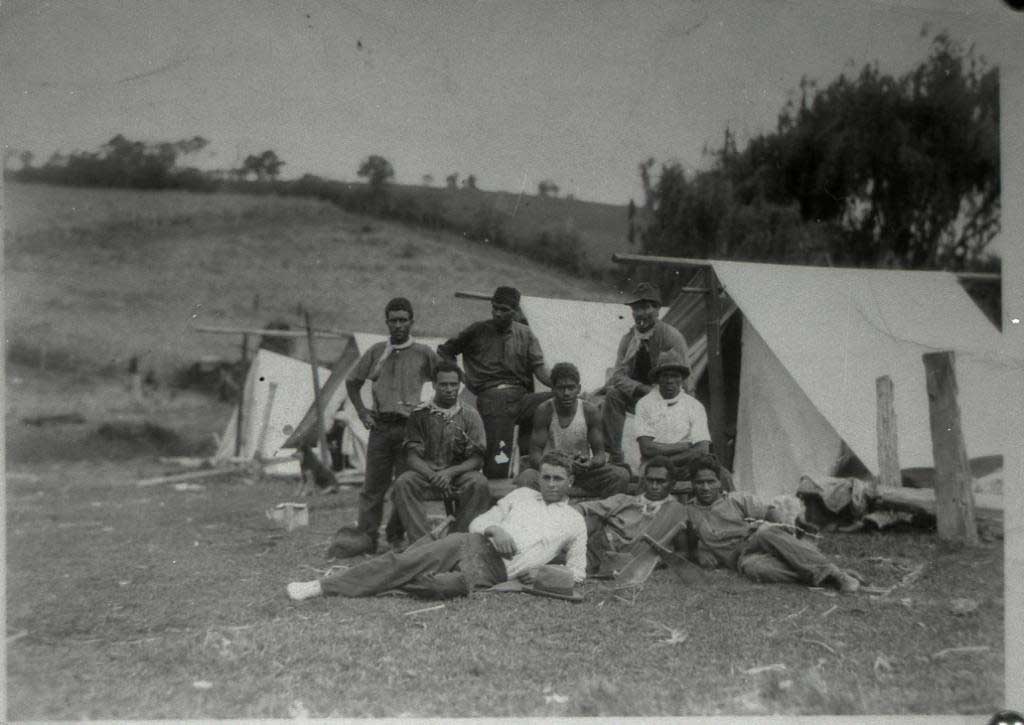 Cane cutters in front of tent - taken at Cudgen on Geo. McCollum's farm. Standing - Marty Watego, George Slockee, Billy Logan. Sitting - Tommie Slockee, Johnny Mussing, Ben Long. Lying Down - Les Slockee, William Yettica, Bob Rotumah. 1928TH1-14
Cane cutters in front of tent - taken at Cudgen on Geo. McCollum's farm. Standing - Marty Watego, George Slockee, Billy Logan. Sitting - Tommie Slockee, Johnny Mussing, Ben Long. Lying Down - Les Slockee, William Yettica, Bob Rotumah. 1928TH1-14The agricultural history of the Tweed, particularly sugar cane, is entwined with the story of the South Sea Islander community who found a home in the Tweed Shire. In the mid to late 1800s more than 62,000 South Sea Islanders arrived in Australia to work as indentured labour in the sugar cane fields and banana plantations of Queensland. Many were from the Solomon Islands and New Hebrides (Vanuatu), Samoa, Kiribati and Tuvalu. Many were "blackbirded", kidnapped against their will, from their villages.
Working conditions in Queensland were harsh. In an 1872 newspaper report about Islanders being kidnapped and brought against their will to Australia it stated “in the cant of the age is called the “labour traffic”, but which was formally known to Englishmen as the “slave trade”.
Many South Sea Islanders escaped Queensland, fleeing south to the Tweed. The first arrived in 1874. In 1901 there were 394 Islanders in the Tweed Valley. By 1906 seventy families had children born here. It is this first generation of Australian born children that provided the labour for much of the local sugar industry, as well as for the Tweed dairy and banana industries, until mechanisation arrived in the 1950s.
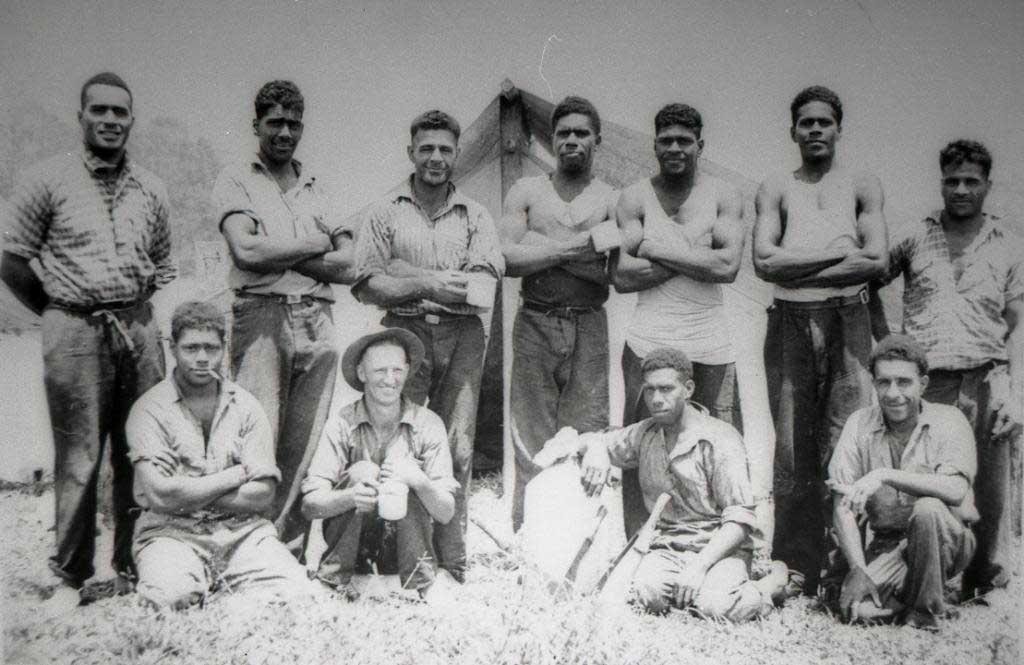 Cane gang of eleven ( tent behind ) sons of original islanders. Standing - Arthur Toar or Sendy. Johnny Mussing, Les Wogas, Terry Togo, Wally Mussing, Tommy Mussing, Bob Rotumah. Sitting - Eddie Mussing, Jack Flanagan, Lindo Togo, Marty Watego. Oak Avenue in background. TH1-09
Cane gang of eleven ( tent behind ) sons of original islanders. Standing - Arthur Toar or Sendy. Johnny Mussing, Les Wogas, Terry Togo, Wally Mussing, Tommy Mussing, Bob Rotumah. Sitting - Eddie Mussing, Jack Flanagan, Lindo Togo, Marty Watego. Oak Avenue in background. TH1-09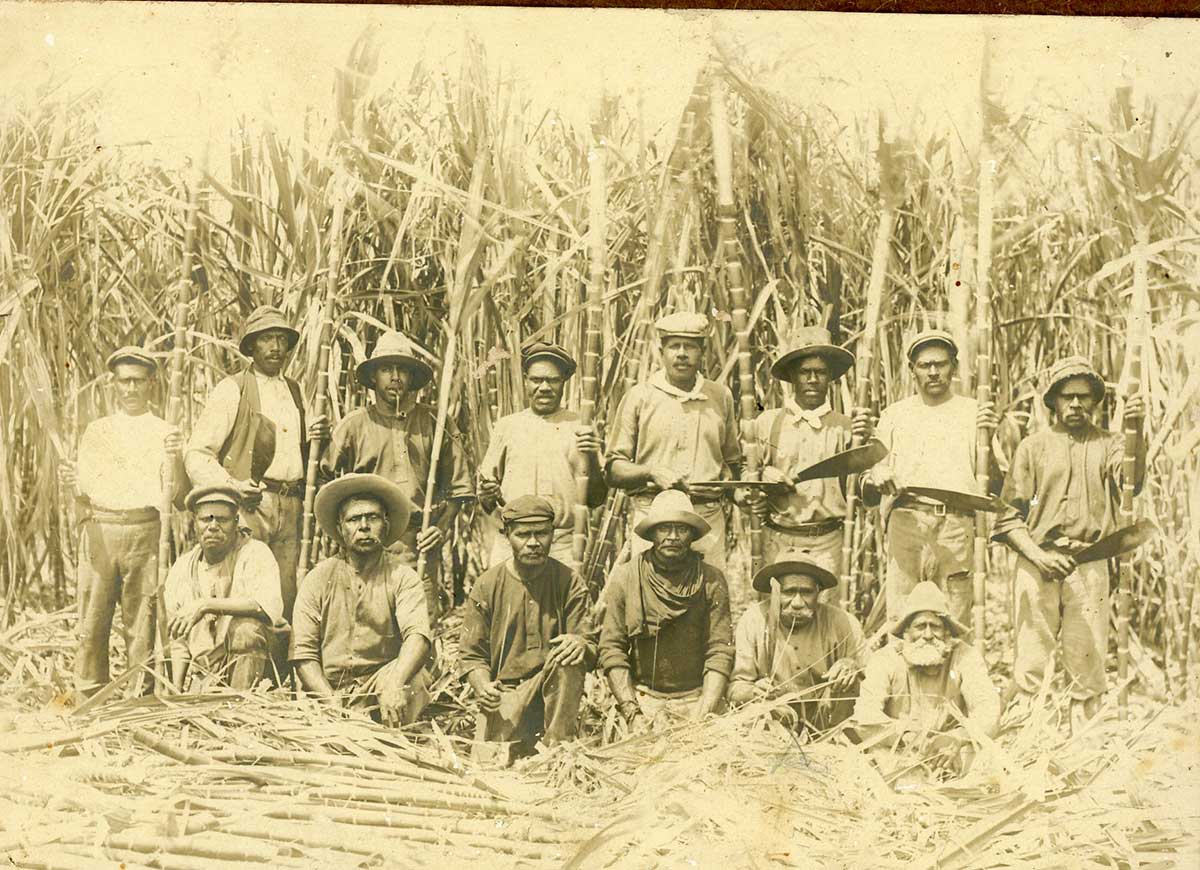 Cane cutting gang, note with photograph reads "One of the last of John Robs Gang, standing from left; Jack Thomas, Edward Wood, Arthur Packow, Peter Mann, Tom Maye - ganger. George Ware, George Toora, Jim Bara. Front row from left; Charlie Evans, Tom Yama, Sandy Burra Burra, Jim Highup, Tom Arru, Ram (?) Kim, Photographer Robinson, Sherwood, 196. MUS2017.18.3
Cane cutting gang, note with photograph reads "One of the last of John Robs Gang, standing from left; Jack Thomas, Edward Wood, Arthur Packow, Peter Mann, Tom Maye - ganger. George Ware, George Toora, Jim Bara. Front row from left; Charlie Evans, Tom Yama, Sandy Burra Burra, Jim Highup, Tom Arru, Ram (?) Kim, Photographer Robinson, Sherwood, 196. MUS2017.18.3
Robb Mill - Cudgen
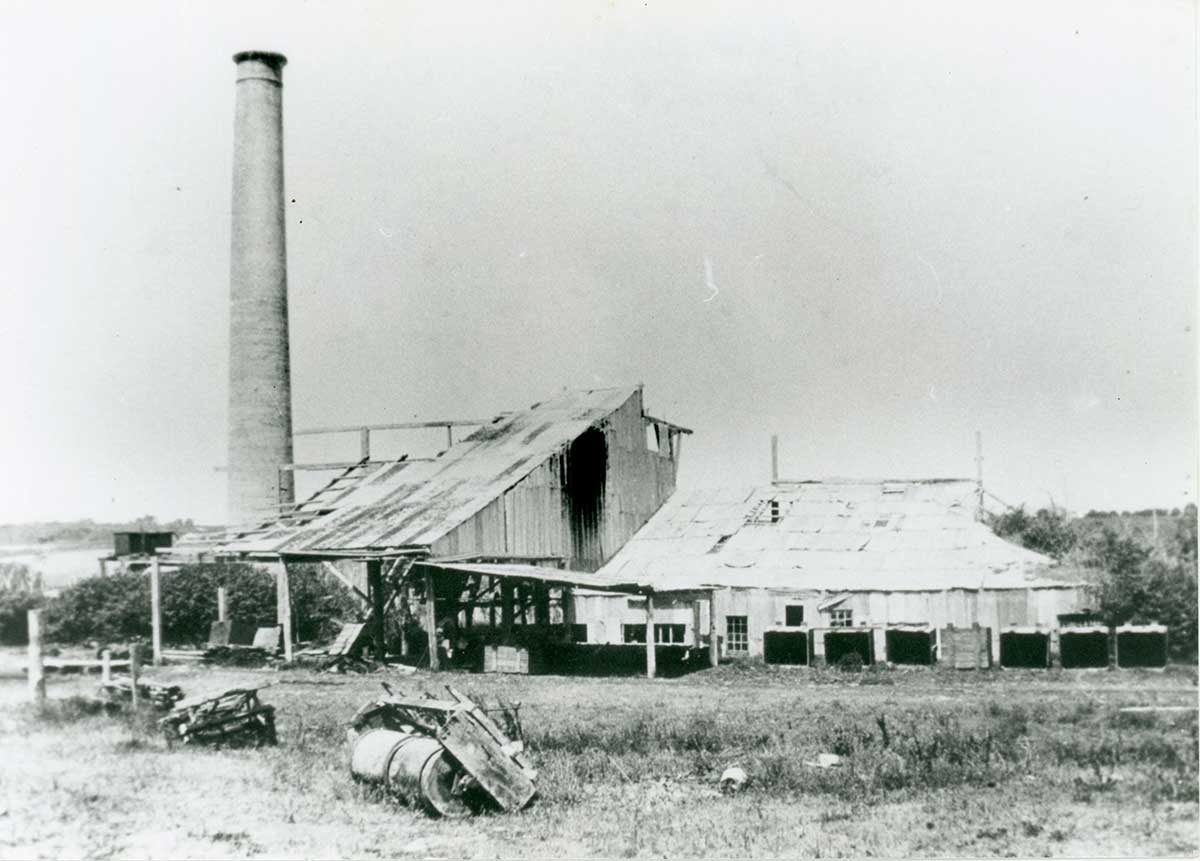 Robb Mill before it was demolished. C1950s. MUS2019.87.745
Robb Mill before it was demolished. C1950s. MUS2019.87.745William Julius arrived at Cudgen around 1878 and set about building a sugar mill. He employed around 200 Islanders from Queensland who had completed their contracts to clear the land and remove stones from the fields, which were used to build fences. He also leased out the land to Islanders to grow sugar which was then processed in the mill. John Robb purchased the Mill from William in 1892. Wages in 1903 were around £1 per week, plus food, and the plantation site also included barracks for housing, a dining hall, a post office, a pub, police station, guest house, workmen’s cottages, a store, a school and three churches. For recreation there was also a choir and a cricket team. The Robb farm became well known amongst Islanders and was a place of refuge for those escaping harsh working conditions in Queensland.
The Robb family determinedly employed only Melanesian labour on their plantation at Cudgen. When the first rumblings of a White Australia policy were heard after Federation in 1901, Robb actively encouraged his South Sea Island labourers, who were known to be conscientious savers, to acquire their own land, thus circumventing the Act. The great esteem in which Robb was held was best demonstrated at his funeral in 1911, when virtually the entire adult population of the Cudgen district followed his coffin through the sugar fields.
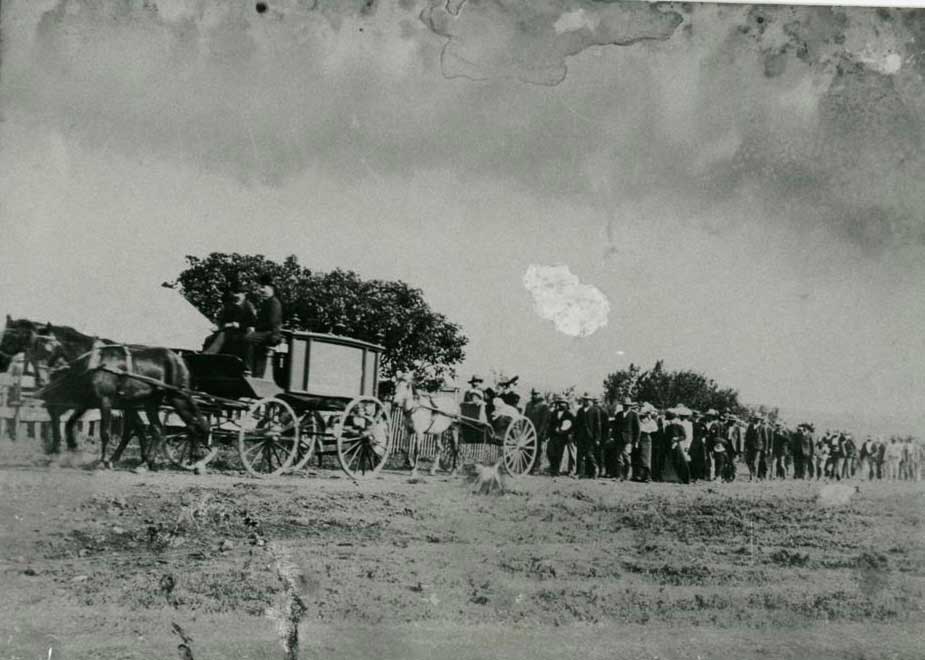 The funeral of Mr Robb, manager of the Cudgen Sugar Mill, 200 mourners walked behind J.M. Holston's horse drawn hearse, 1911. MUS2015.43
The funeral of Mr Robb, manager of the Cudgen Sugar Mill, 200 mourners walked behind J.M. Holston's horse drawn hearse, 1911. MUS2015.43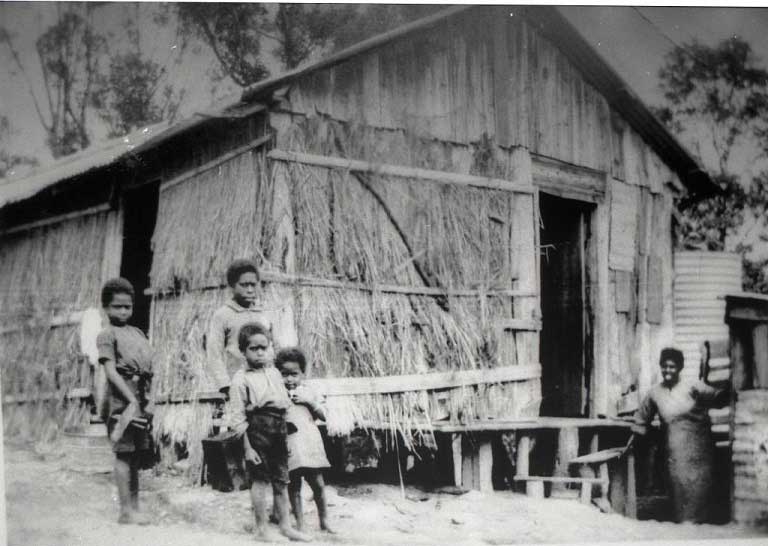 A grass hut at Forest Hill (Cudgen) which was part of the 'Islanders' Village'. The hill was affectionately known as 'Togo’s Hill’. Fanny Togo had worked as domestic help for the local O’Keefe family. The property and the house Fanny lived in was left to the Togo Family. TH1-11
A grass hut at Forest Hill (Cudgen) which was part of the 'Islanders' Village'. The hill was affectionately known as 'Togo’s Hill’. Fanny Togo had worked as domestic help for the local O’Keefe family. The property and the house Fanny lived in was left to the Togo Family. TH1-11
Activism
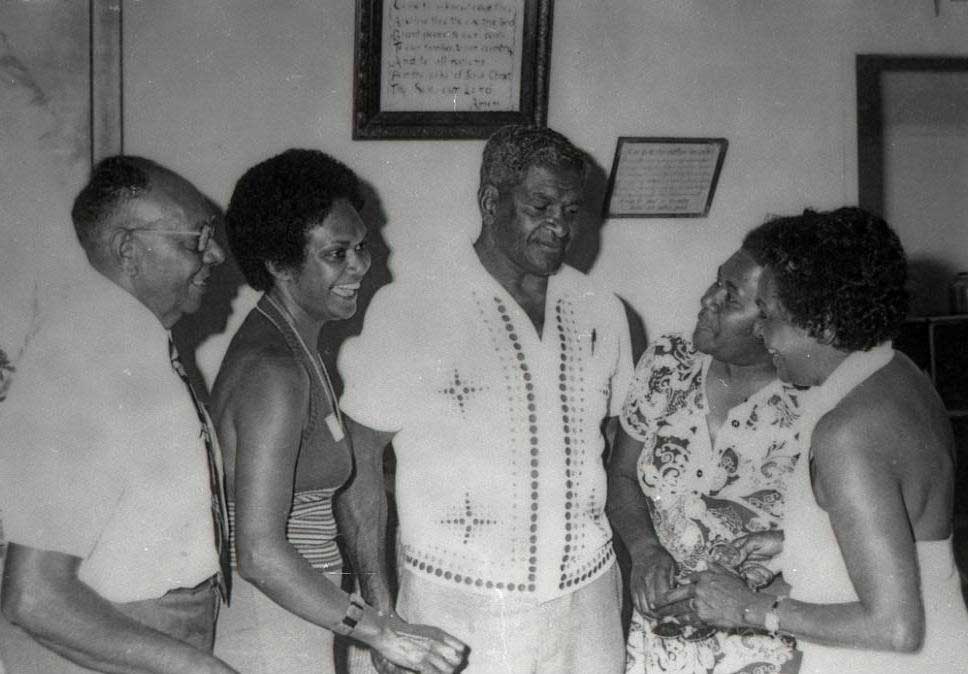 Zane Corowa, Nasuven Enares, Wally Mussing, Naru Leichhardt and Faith Bandler. C 1950s
Zane Corowa, Nasuven Enares, Wally Mussing, Naru Leichhardt and Faith Bandler. C 1950sThis historic photo includes Community Leaders: Zane Corowa, Nasuven Enares, Wally Mussing, Lerou Leichhardt and Faith Bandler at the CWA Hall Coolangatta, c.1950s. Their collective and individual activism led to increased rights for Aboriginal and South Sea Islander people. And so their legacies and family names exemplify an integral part of Tweed’s history, like Faith Mussing Bandler Park in Tumbulgum, named in honour of Dr Faith Bandler OAM who spent much of her life fighting for justice. Faith cited stories of her father, Peter Mussing’s harrowing experience as a slave labourer as motivation for her activism, “My father was taken from his Island, which is the Island of Ambryn, that makes up the eighty odd Islands of the nation of Vanuatu, at a very young age. He was about twelve or thirteen in the year 1883, and he was forcibly taken with other men and women and brought to Mackay.”
Today
Tweed South Sea Islander people still live and work on the Tweed, celebrating their rich cultural heritage and vibrant community. Several organised groups are active in the community including the Tweed South Sea Islander Communities Incorporated and the Tweed Gold Coast South Sea Islander Communities group.